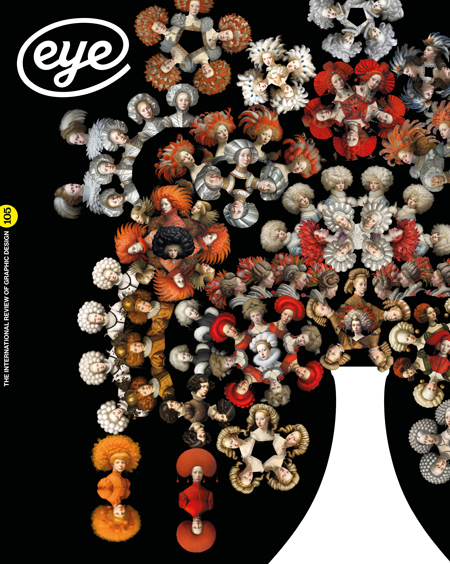Autumn 2023
Artificial idiot: Puzzling answers to nonexistent questions
Jonathan Hoefler experiments with AI to create what he calls ‘Apocryphal Inventions’. By Marian Bantjes / Eye Editors
Early typewriter misfire by Wm. Tunnicliffe & Sons of Birmingham.
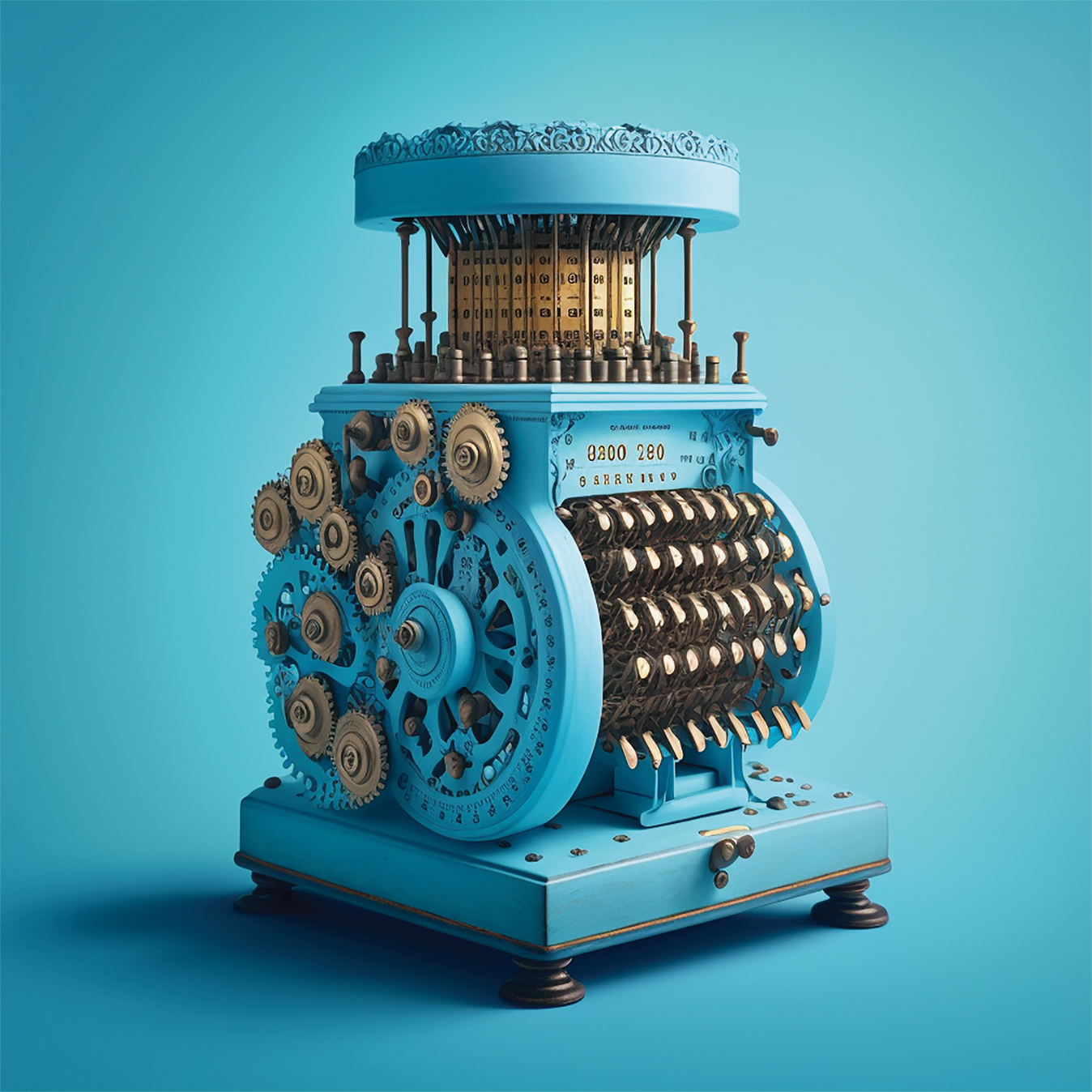
When Jonathan Hoefler started experimenting with Midjourney, he directed his AI prompts to generate a series of ‘Apocryphal Inventions’. These are cyberpunk confections of wood and enamelled metal that could be mechanical instruments, control room gauges or writing machines with intricate engravings and perversely unreadable type, their cracks occasionally infested with tiny creatures.
Hoefler states that he created this ‘aestheticised nonsense’ by subverting the system ‘to refine and intensify its most intriguing misunderstandings’.
Imaginary ‘assaying device’ from the time of the violent ‘Blacksmiths and Trappers War of 1860’. In his extensive Instagram caption, Hoefler writes: ‘In principle, these “bonded assayers” were incorruptible, and the judgment of their precision machines absolute. In practice, less so.’
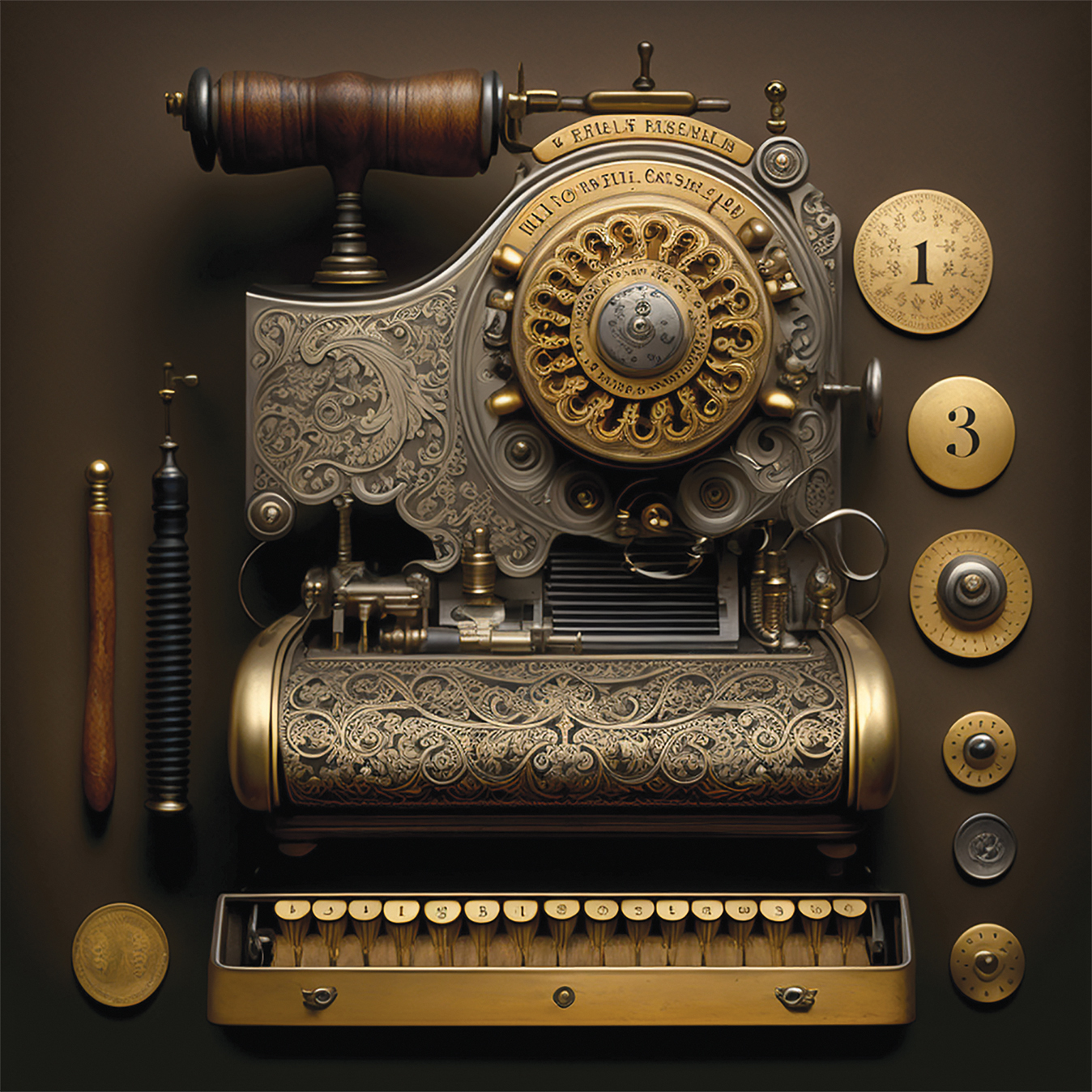
Some images have been retouched to make them more believable and Hoefler’s amusing accompanying descriptions are full of borderline plausible detail.
An impressive collection of further ‘Apocryphal Inventions’ can be seen on the ‘A. Inventions’ page of Hoefler’s website, jonathanhoefler.com/inventions, which adds inventively written detail to the images already seen on Instagram, including bogus manufacturers, materials, dimensions, dates and the cultural context.
Hoefler says that his images ‘represent some of AI’s most intriguing answers to confounding questions, an inversion of the more pressing debate in which it is humanity that must confront the difficult and existential questions posed by artificial intelligence.’
1950s British ‘ration meters’ from the collection of the ‘Imperial Lard Museum in Basingstoke’.
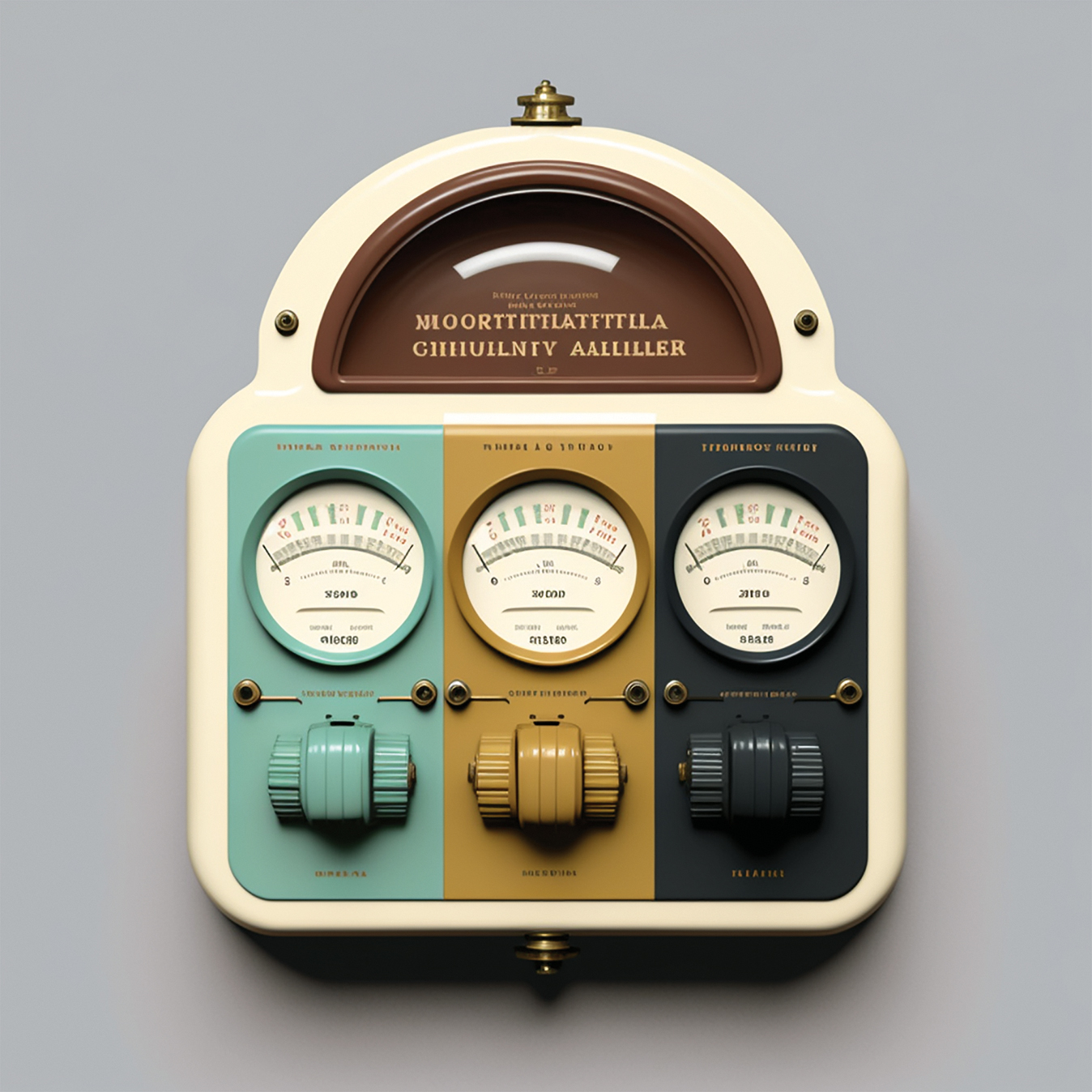
Marian Bantjes writes:
‘It was these plausible machines of Jonathan’s that convinced me there was more to be had from text-to-image generators than women with flowing hair riding unicorns. And part of the AI genius is its unfathomable ability with colour. While I don’t know Jonathan’s prompts, I suspect a reference to eras and genres are what hints at the colour schemes rather than any specific prompting. In the case of no. 2, choosing even an approximation of those turquoise, tan and charcoal colours would be impossible, so that is directly from the machine – what an eye!
Of course, as always with Jonathan, it’s his brilliantly funny descriptions that bring these fully to life.’
Mid-career keyboard created by the workshop of Leopoldus Friedrich Rademacher (ca.1665-1721) for the court of Joseph I, exploring the inventor’s interest in ‘alternative tonalities’.
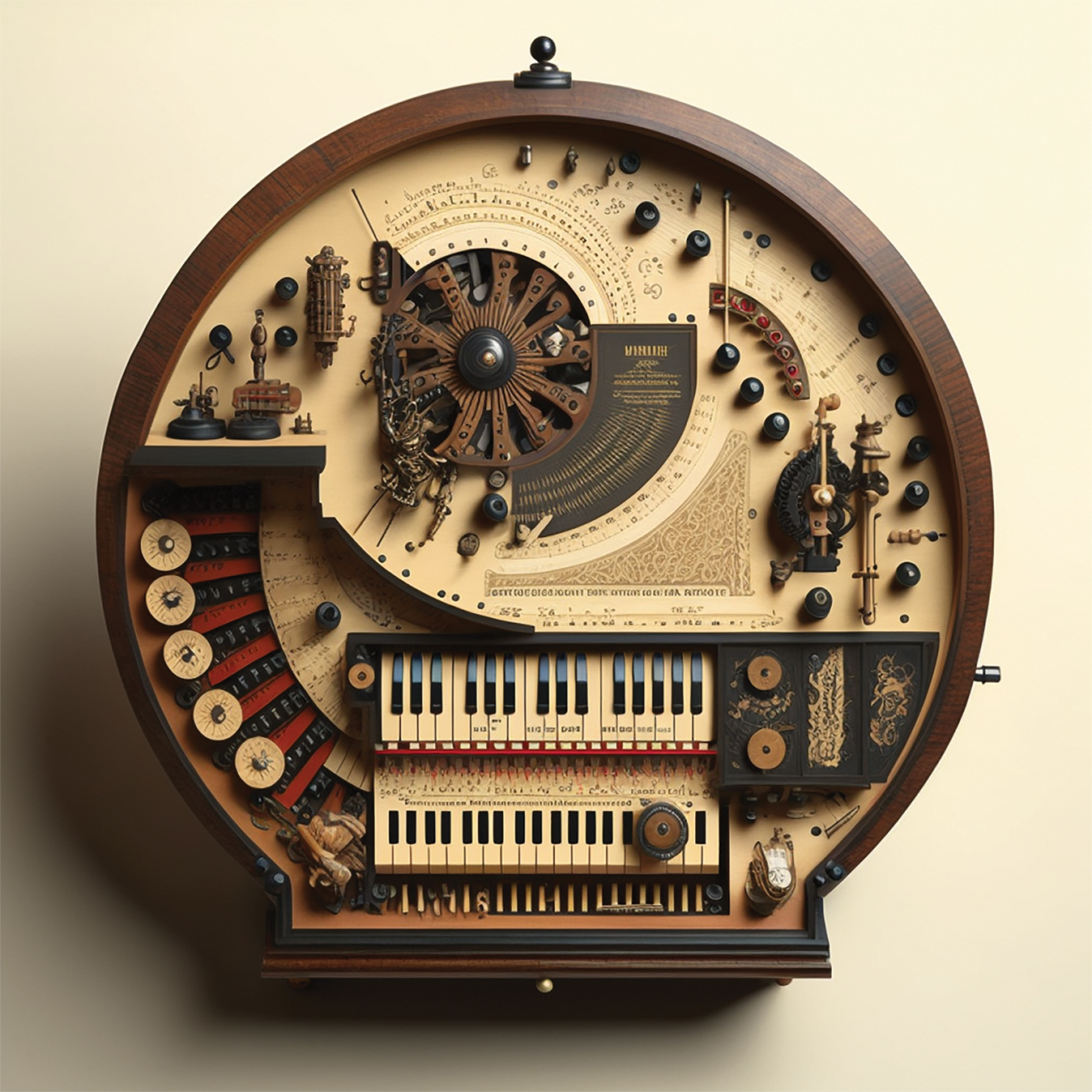
Marian Bantjes, graphic artist, writer, Bowen Island, Canada
First published in Eye no. 105 vol. 27, 2023
Eye is the world’s most beautiful and collectable graphic design journal, published for professional designers, students and anyone interested in critical, informed writing about graphic design and visual culture. It is available from all good design bookshops and online at the Eye shop, where you can buy subscriptions and single issues.

